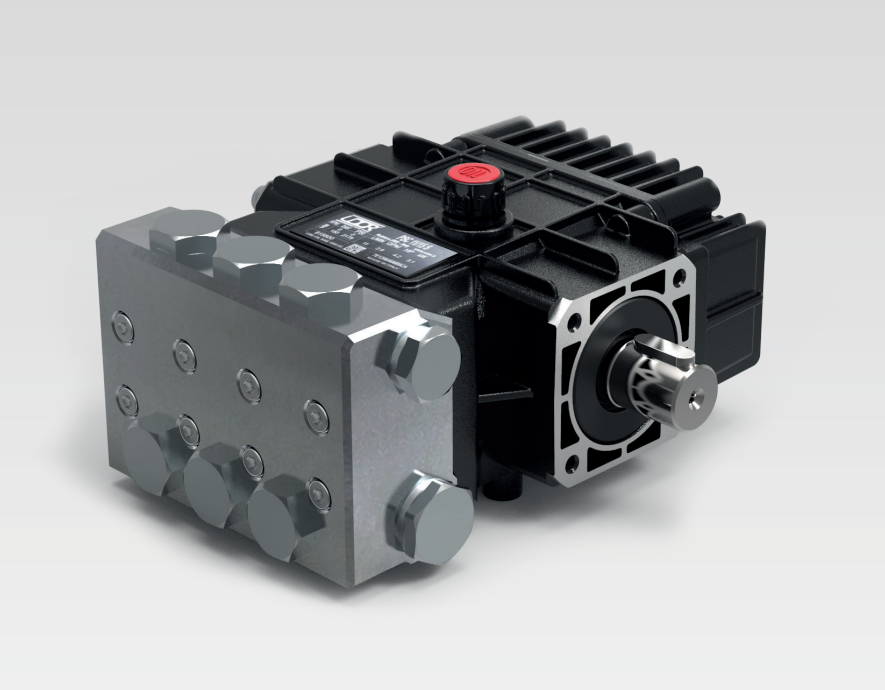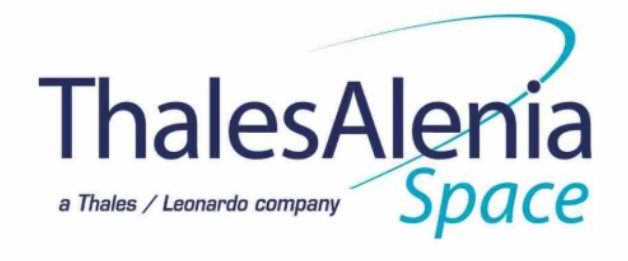
-
StatusOngoing
-
Status date2024-03-25
-
Activity Code4B.146
The EPFB project’s main goal is the feasibility study of a full pump fed system serving both the AKM and the RCS of a MMH/MON CPS, separately or simultaneously. The main aim is to keep the propellants’ tanks to lower design pressures if compared to a pressure fed system, avoiding the employment of a complex PCA, while guaranteeing comparable performances in terms of thruster’s inlet pressure, thrust and specific impulse. Hence, the project’s focal point is the identification of a pump which enables to obtain the target delivery pressure with a blowdown inlet pressure ranging between 5.5 and 0.5 bar, limiting the storage of the pressurizing gas to the propellant’s tanks only. The limitation or elimination of the PCA results in the simplification of the propellants fluidic line, thus leading to noticeable mass savings. As a result, a pump fed system limits also the eventuality of generating large space debris (thanks to the reduction of spacecraft’s bulky components) in aid of ground and orbital safety, which has become of major issue mainly in the last decades.
The key challenge is to identify a pump model whose operating head ratio, and flow rates are suitable for both apogee-kick and attitude control manoeuvres , guaranteeing optimal performances. The system should also have the capability of increasing the main engine delivery pressure up to 50 bar for systems potentially requiring higher chamber pressures. Moreover, the main drawback related to the pump's functioning, consisting of the onset of pressure ripples, must be limited. The pressure ripples may result in mass flow rates and mixture ratio oscillations being detrimental for the thrusters nominal propulsive performances, and must be kept lower than 0.5 bar.
The pump fed architecture is an alternative layout serving a CPS for both orbital and attitude control of telecommunication platforms. The use of an electric driven pump instead of a PCA has the main goal of keeping both the propellant tanks and the whole fluidic lines to lower pressure with the consequent reduction in masses, thicknesses and overall dimensions. Hence, the major benefit comes from an overall reduction in the mass budget required by the propulsion system. Moreover, the reduction of the spacecraft’s bulky components makes it possible to harden its walls against debris in aid of orbital and ground safety. Furthermore, the use of a pump fed system would eliminate the risk associated to the storage of high pressure tanks during the 15 years life cycle of a spacecraft. In fact, in a pressure fed architecture, the pressurizing gas tanks continuously hold pressure, even at the end of the regulated phase. Any damage to the PCA would cause serious consequences to the spacecraft platform itself or even the mission’s failure.
The key functional components in the pump-fed architecture are two electrical driven pumps, driving separately the fuel and the oxidizer. The increasing in s/c platforms deliverable power makes it possible to use electric driven pumps instead of turbo-molecular ones. The chosen reference model is an OTS three pistons axial pump, with the option of a redesign in terms of structure, mass, and chemical compatibility to adapt it for target space applications. The pump’s pressure ripples are limited by the insertion of pressure dampers, along both fuel and oxidizer line downstream the pump. Pressure dampers are crucial for the reduction of higher and lower pressure fluctuations and, of the mass flow and mixture ratio oscillations. When the line pressure drifts upward from the target nominal value, part of the propellant’s mass flow fills the damper, until pressure equilibrium is reached. This absorbed mass flow is stored and released by the damper if the line’s pressure drops. Furthermore, this mass flow is eventually stored, feeding the RCS firings during the station keeping manoeuvre with no need of keeping the pump constantly ON. This is a precautionary measure for an undamaged pump’s functioning within a 15 years s/c operational life.
The system’s architecture includes two fluidic lines, one for the fuel (MMH) and one for the oxidizer (MON3), whose structure is identical.
Each line is provided with an electric driven pump serving both the AKM and the RCS. A PCA is not included, leading to blowdown from 5.5 bar to 0.5 bar at the pump inlet (the presence of a pressurizing gas is limited only in the propellant tanks). In addition, each pump is comprised of its own control system for the activation, based on line’s pressure feedback as the control parameter. Hence, the pumps are automatically ramped up and down when the line’s pressure goes outside a settled reference range, without the necessity of defining a fixed duty cycle. Pressure dampers are placed along each propellants line to keep the pressure levels within the operating range, thus reducing the eventuality of mass flows and mixture ratio oscillations that may lead to a decrement in the engine’s performances. The pressure dampers function also as mass flow accumulators, feeding the thrusters firing without the necessity of keeping the pumps ON.
A performance model of a full pump-fed telecommunication platform has been built in EcosimPro, and the proper system’s architecture has been identified.
The further step is an hot firing test campaign of a fully pump fed CPS to compare the real performances of the reference engines with the results achieved with the tool. Additionally, this step will check and increase the predictive capabilities of the tool.
Moreover, a series of design changes are foreseen on the chosen OTS pump model and driving motor to get to a space rated design.
An OTS pump model that meets the mass flow and pressure requirements has been identified. Then, the pumps and the pressure dampers have been successfully modelled in EcosimPro, correlating numerical results with experimental data from a CPS bi-propellant thruster pump fed test campaign. The validated tool has been used to build a performance model for of a full pump fed telecommunication platform. The performed simulations allowed the identification the overall system’s architecture and functioning leading to the best results in terms of performances, system’s reliability and simplification, and mass savings, while guaranteeing the reference thrusters propulsive performances.



